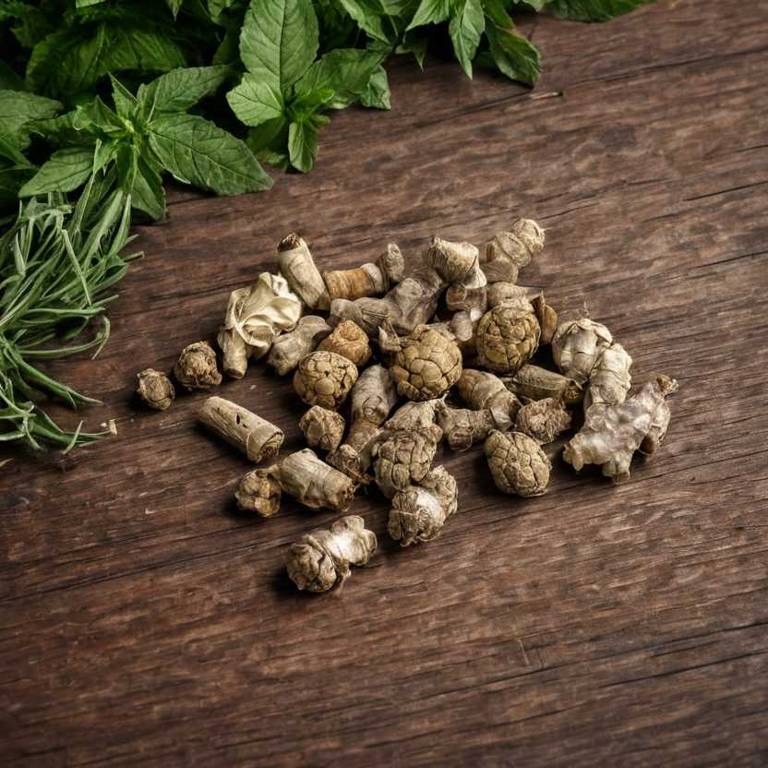By Leen Randell
Updated: Jul 06, 2024
What to know about Carya ovata (shagbark hickory) before using it medicinally

Carya ovata, commonly known as shagbark hickory, is a medicinal herb that has been extensively studied for its potential health benefits, which include lowering cholesterol levels, reducing inflammation, and acting as an antioxidant to protect against oxidative stress.
From a horticultural perspective, this deciduous tree is valued for its impressive size, which can reach up to 80 feet in height, as well as its distinctive shaggy bark and edible nuts that are enjoyed by wildlife and humans alike. Carya ovata belongs to the Juglandaceae family and is characterized by its compound leaves with 5-7 leaflets, each with 3-5 lobes, and its edible nuts, which are rich in protein and healthy fats.
The shagbark hickory has been used by various cultures for centuries, with the indigenous peoples of North America using its bark and nuts for medicinal and culinary purposes, while early European settlers prized its wood for furniture-making and cabin construction.
This article explains the medicinal, horticultural, botanical, and historical aspects of Carya ovata.
What are the medicinal properties of Carya ovata?
Carya ovata helps with digestive issues, fever reduction, and respiratory problems. It has been traditionally used to treat diarrhea, dyspepsia, and coughs. Its extracts have anti-inflammatory and antioxidant properties.
The active constituents of Carya ovata include flavonoids, phenolic acids, and terpenoids, which are responsible for its medicinal properties. These compounds have been shown to have antibacterial, anti-inflammatory, and antioxidant effects.
The most commonly used parts of the plant for medicinal purposes are the bark, leaves, and nuts. The bark contains a high concentration of flavonoids and phenolic acids, while the leaves and nuts are rich in terpenoids.
Improper use of Carya ovata can cause allergic reactions, skin irritation, and gastrointestinal upset. Consuming large quantities of the plant's extracts can lead to an increased risk of bleeding, particularly when combined with anticoagulant medications.
When using Carya ovata medicinally, it is essential to be aware of potential interactions with other medications, such as blood thinners, diabetes medications, and immunosuppressants. Pregnant and breastfeeding women should also exercise caution, as the plant's extracts may affect fetal development or infant health.
What are the horticulural aspects of Carya ovata?
Carya ovata grow best in well-drained soils and full sun to partial shade. The optimal temperature range for growth is between 35°F to 95°F (2°C to 35°C). Shagbark hickory can tolerate a wide range of soils but prefers slightly acidic to neutral pH.
Plant shagbark hickory in early spring or fall, about 10-15 feet apart. Dig a hole twice as wide as the root ball and just as deep. Gently remove the tree from its container and place it in the hole, ensuring the root flare is level with the soil surface. Water thoroughly and mulch around the base.
Harvest shagbark hickory nuts in late fall or early winter, when they fall from the tree naturally. Collect the nuts by hand, as they are prone to rot. Store the nuts in a dry, cool place to maintain their quality. Shagbark hickory nuts can be roasted or dried for consumption.
Shagbark hickory is susceptible to pests like the shagbark hickory nut weevil and the hickory tussock moth caterpillar. Diseases such as powdery mildew and root rot can also affect the tree. Regularly inspect the tree for signs of infestation or infection, and take prompt action to prevent the spread of pests and diseases.
What are the botanical aspects of Carya ovata?
Carya ovata is a deciduous tree characterized by a broad, rounded crown, smooth gray bark, and pinnately compound leaves with 5-7 leaflets. The leaves are dark green on top and pale green underneath.
Carya ovata is classified in the family Juglandaceae, order Fagales, and is native to eastern North America. The species name ovata refers to the egg-shaped nuts produced by the tree. The tree's full botanical name is Carya ovata (Mill.) K. Koch.
Several variants of Carya ovata exist, including the eastern shagbark hickory and the western shagbark hickory. These variants differ in their geographical distribution, leaf shape, and bark texture. Other notable variants include the 'Fairview' and 'Hill's' cultivars.
Carya ovata is widely distributed across eastern North America, from Canada to the southeastern United States. It grows in deciduous forests, along streams, and in upland areas with well-drained soil. The species is also naturalized in parts of Europe and Asia.
Carya ovata produces small, yellow-green flowers in late spring. The flowers are followed by edible nuts, which mature in late fall and are dispersed by animals and birds. The tree can live up to 300 years, and its seeds remain viable for several years after being shed.
What are the historical aspects of Carya ovata?
Carya ovata is a deciduous tree native to eastern North America. It has been used by indigenous peoples for centuries as a food source, providing edible nuts, and as a source of material for tool-making.
In many Native American mythologies, the shagbark hickory is associated with the thunderbird, a powerful creature that is said to create thunder and lightning. The tree's shaggy bark is also linked to the thunderbird's role in shaping the world.
In various cultures, the shagbark hickory has symbolic meanings. For example, the tree's hard wood makes it a symbol of strength and resilience. In some African American communities, the tree's nuts are seen as a symbol of good luck.
The shagbark hickory is mentioned in several historical texts, including the journals of early American naturalist and botanist William Bartram. He wrote about the tree's unique bark and its importance in the ecosystem.
Shagbark hickory wood has been used in various historical artifacts, including tool handles, axe handles, and furniture. Many of these artifacts have been found in archaeological sites in eastern North America.